Project Brief
Subterrain Eden is a design of food production and residential design, the first of its kind on Mars takes 7 months to travel from Earth to Mars, therefore any food transported would only last the journey and few initial days, which also is super expensive, Therefore, for sustaining for longer periods food production is essential on Mars.
Design Concept
All conceptualized Mars sketches have greenhouses. As sun is so far away, incident light is similar to what we get in Alaska, therefore greenhouses are not the answer. Due to the high amount of radiation, the most optimum solution researched is food production to be done underground. The design concept is illustrated below-
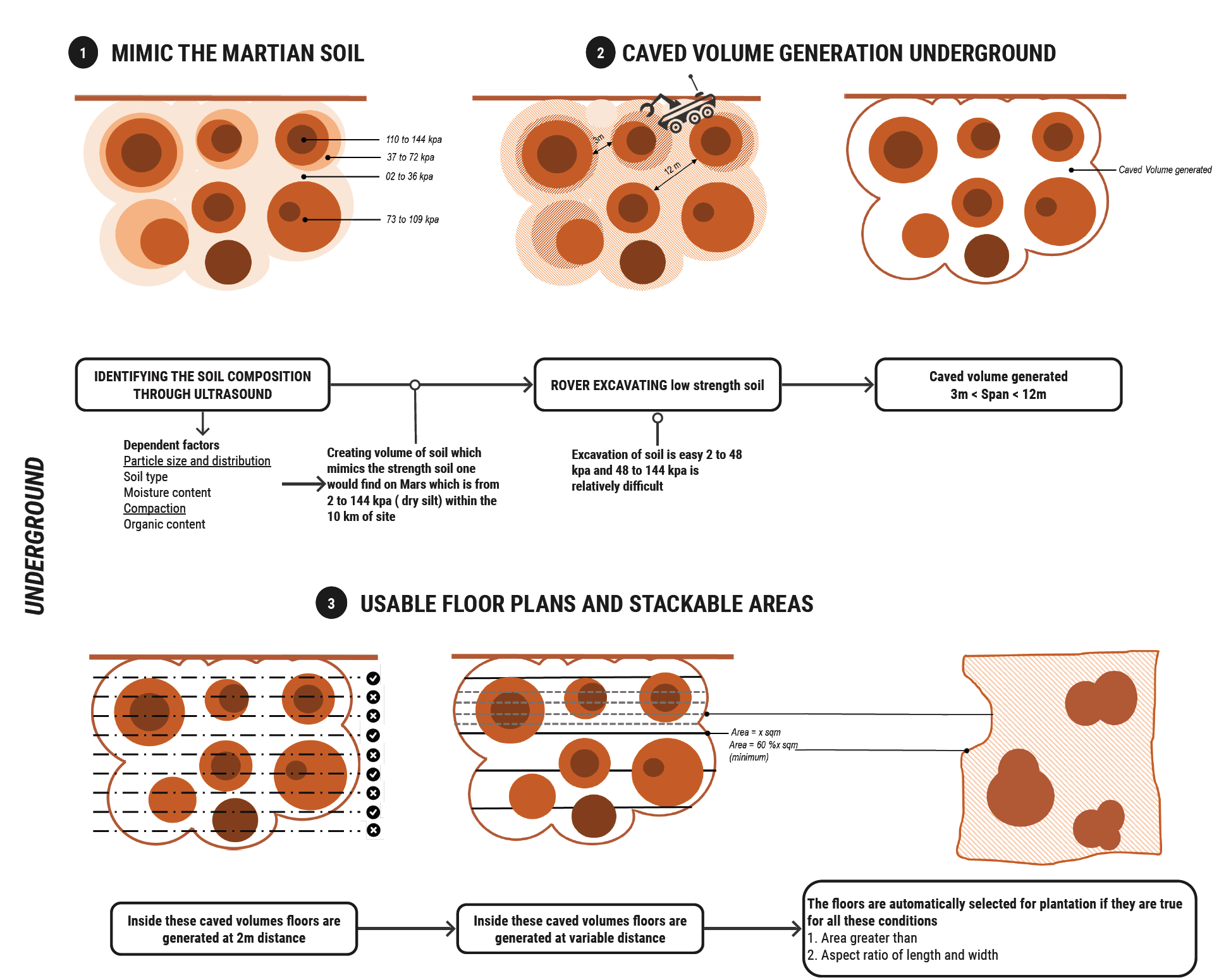
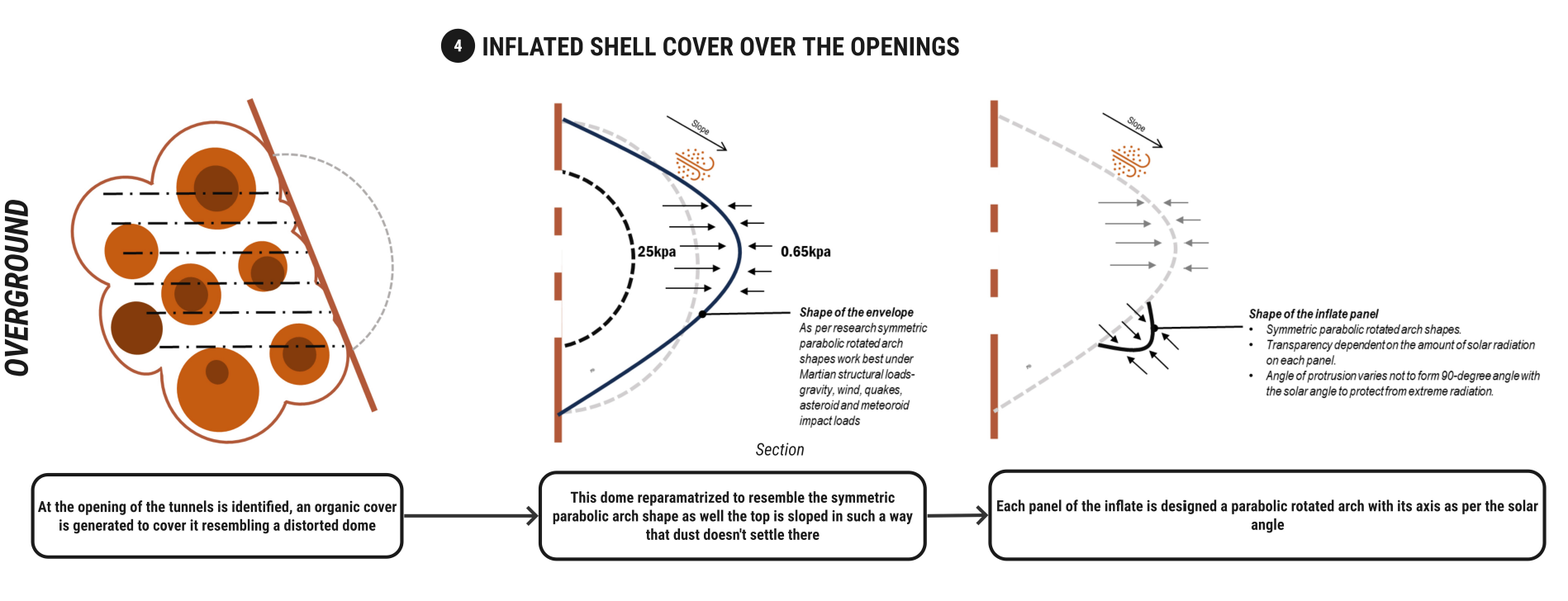
Concept development for the overground
Computational Output
Underground – The soil is mimicked by using voxels, Elefont is used to add attributes to voxels, and then the voxels which fall in the criteria of soft soil that is with attribute 2 – 48 kpa out of 2-144 kpa are removed and the voxels left are smoothened through Dendro to mimic underground caves which open up when they meet the surface as illustrated below.

Overground – At the intersection of caves with the site the extracting curves are used to construct a mesh, with this then Inflated using Kangaroo pressure loads as illustrated below , to resemble the symmetric parametric arch which works for Martian loads as well load due to the pressure.
Overground base mesh
Our project consists of 3 phases A is for 50 people, phase B for 100 people and phase C for 300 people, we will be focusing on Phase A documentation.
Rhino Inside Revit
The diagram below illustrates how the underground geometry was transferred to Revit using Rhino Inside Revit Components.
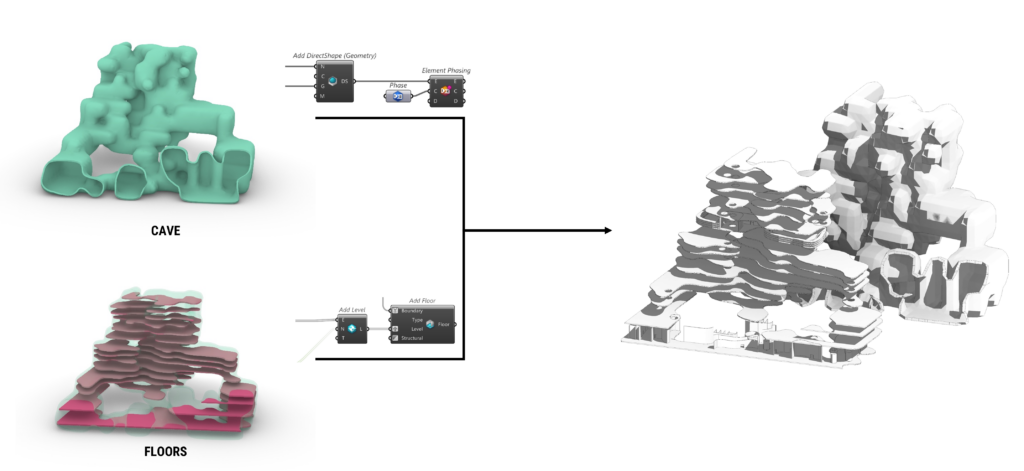
The topography of the site was imported from the Rhino Inside Revit component mesh topography.
For the overground structure, the workflow used is shown below, the sheet documentation of the same is shown later.
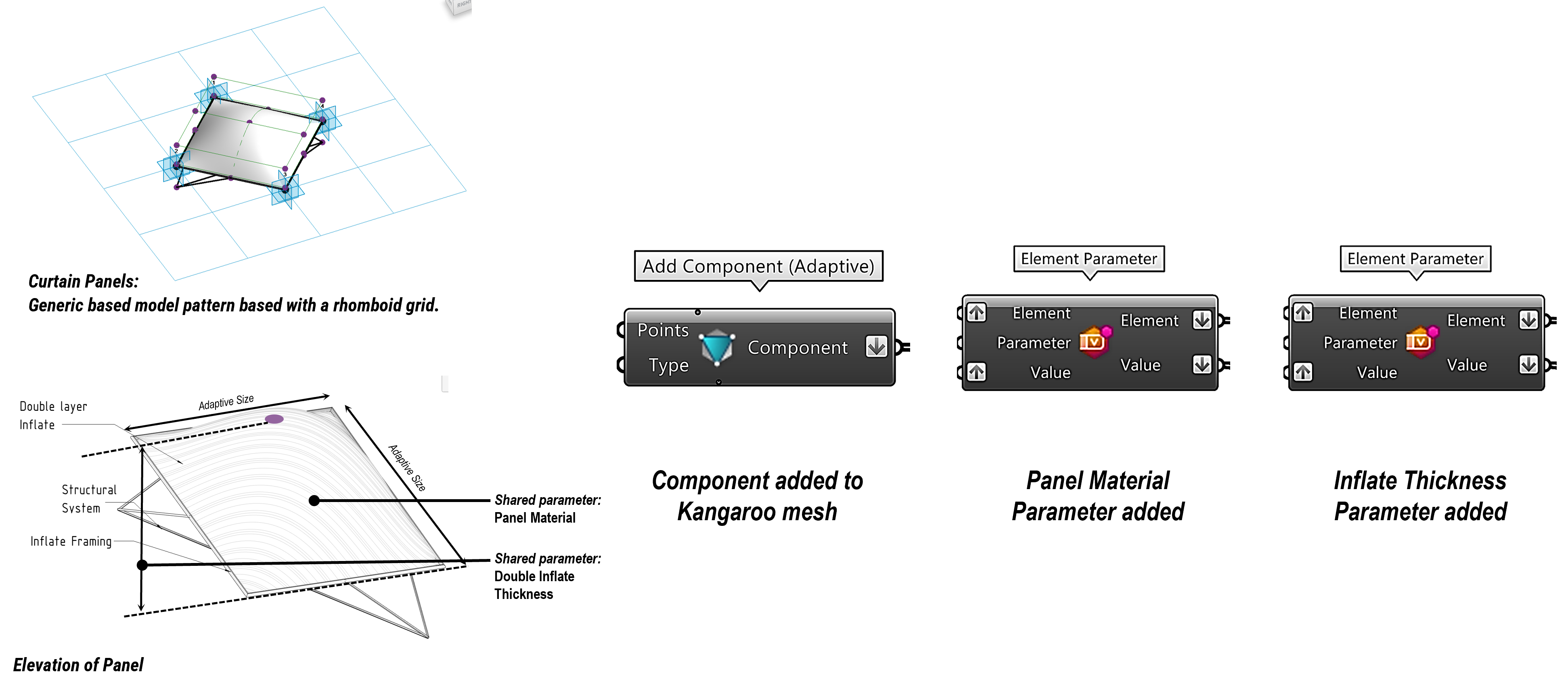
Project Design Documentation in Revit
The cave geometry is organic we imported it to Revit from Rhino as a basic shape, the rooms boundary wasn’t recognizing the exterior walls, hence we took our exterior boundary from the floors and the internal were creating as per suggesting zoning using room separators.
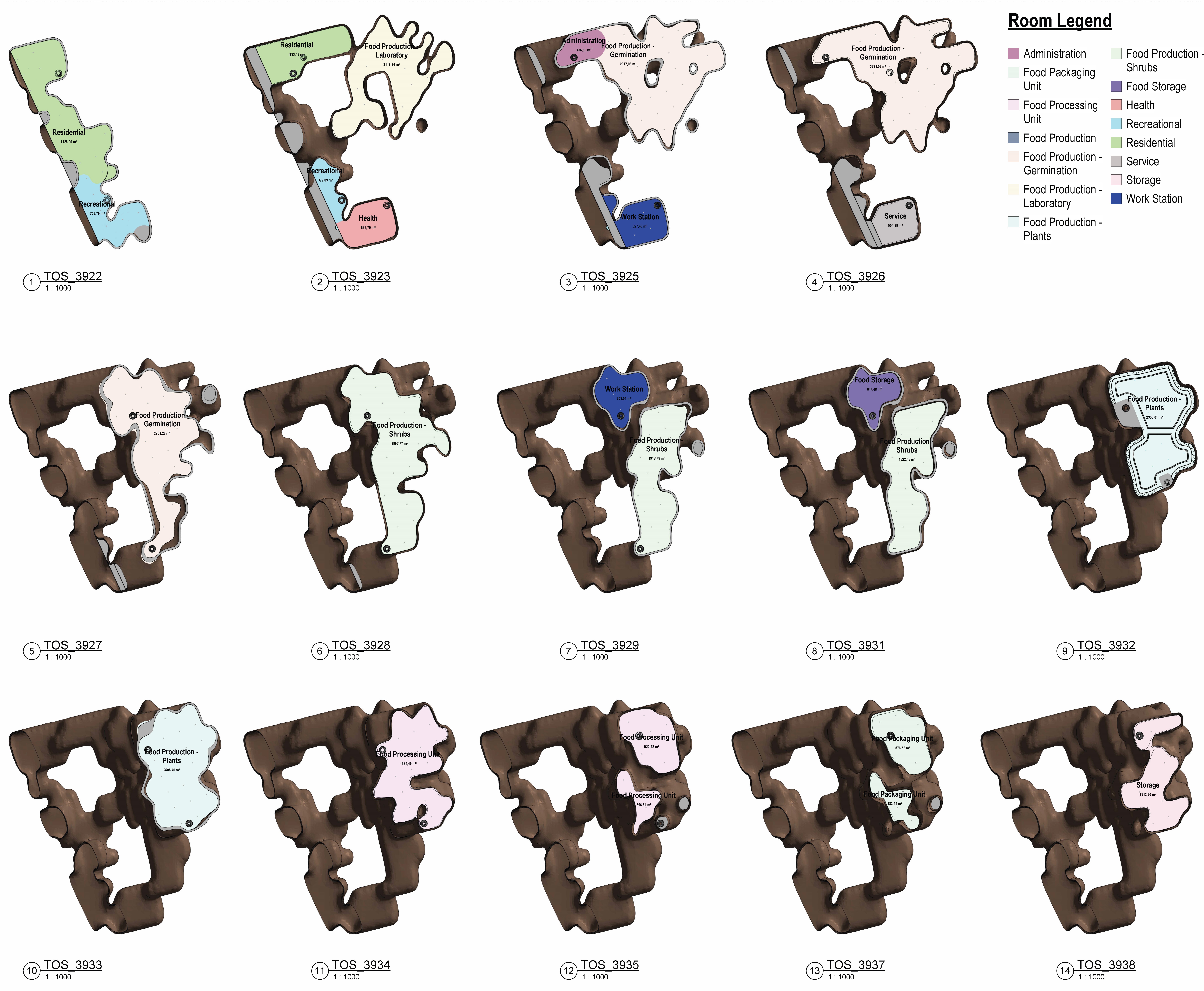
Design Plans
The below dependent partial floor plan for residential and recreational zone to give a clear view of how things are planned out intermixed with recreation areas.
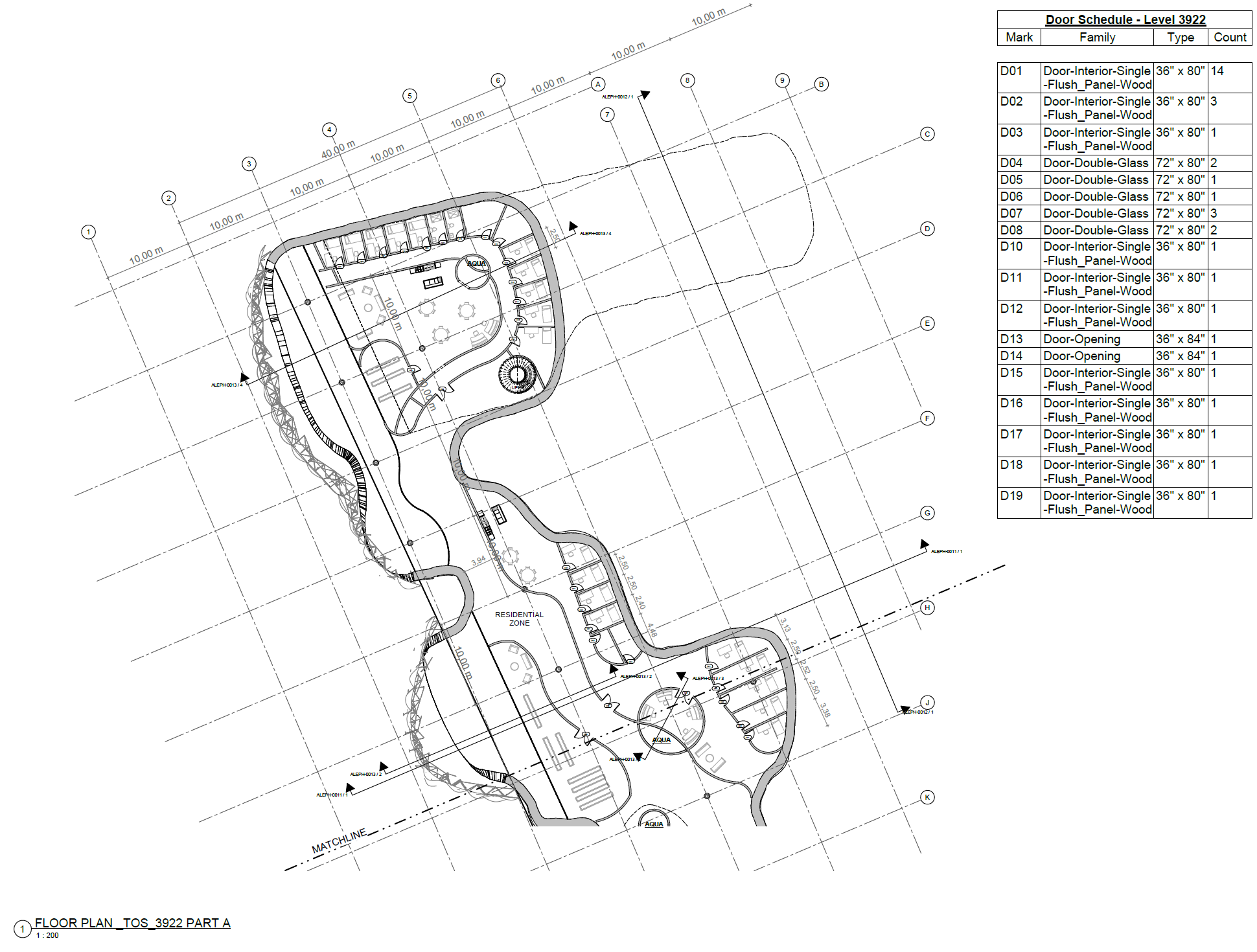
The below plan details out the aquaponics food production, , with different hatches for each category, as we will see later in the detailed section with the view range set so that the boundary food production and the lower water tank can be clearly differentiated, as these tanks also have food racks on top.
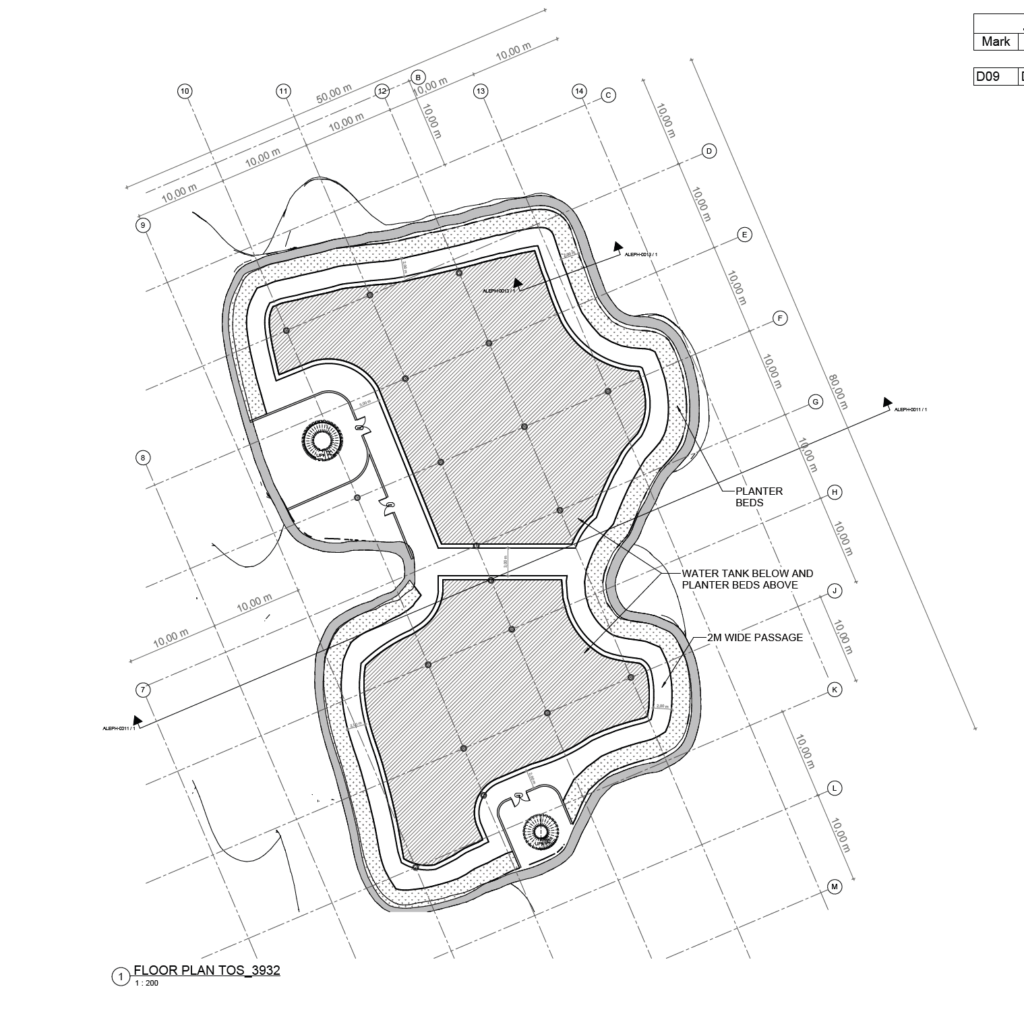
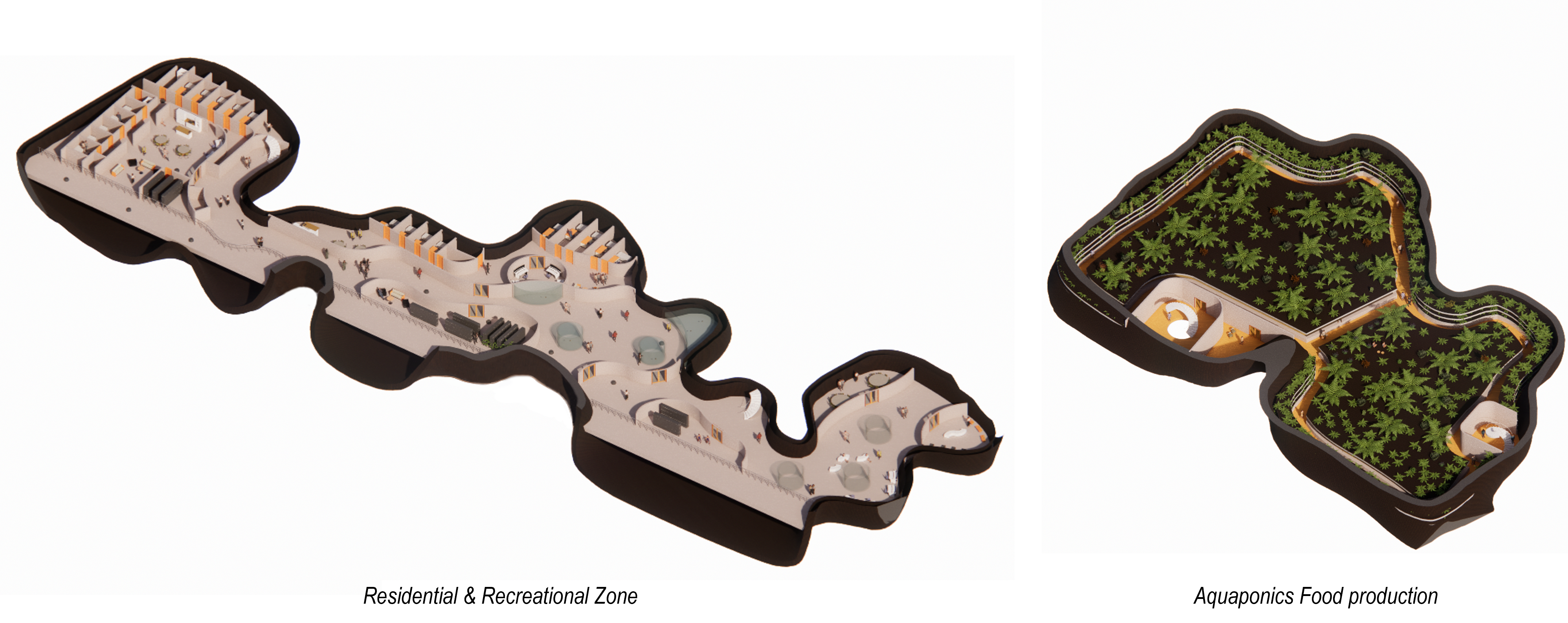
The section illustrate all the floor levels, which were made in Revit and called out using RIR to attach them to the respective floors. These sections show both the organic – basic shape form as well as column family which together form the structural system. They also have 2 callouts for the subsequent two detailed sections. In section 1, the different heights of the stacks can be seen making the aquaponics system work. In section 2 we see how our outer envelope interacts with the interior.


Adaptive Family
The inflate family designed is from the metric generic based model pattern based with a rhomboid grid. These panels along with the structural system are adaptive as well as designed in such a way that they came continuous shape even when they take the shape of the kangaroo inflated mesh. They are of 3 different materials – which vary on transparency and amount of solar radiation they allow to pass.
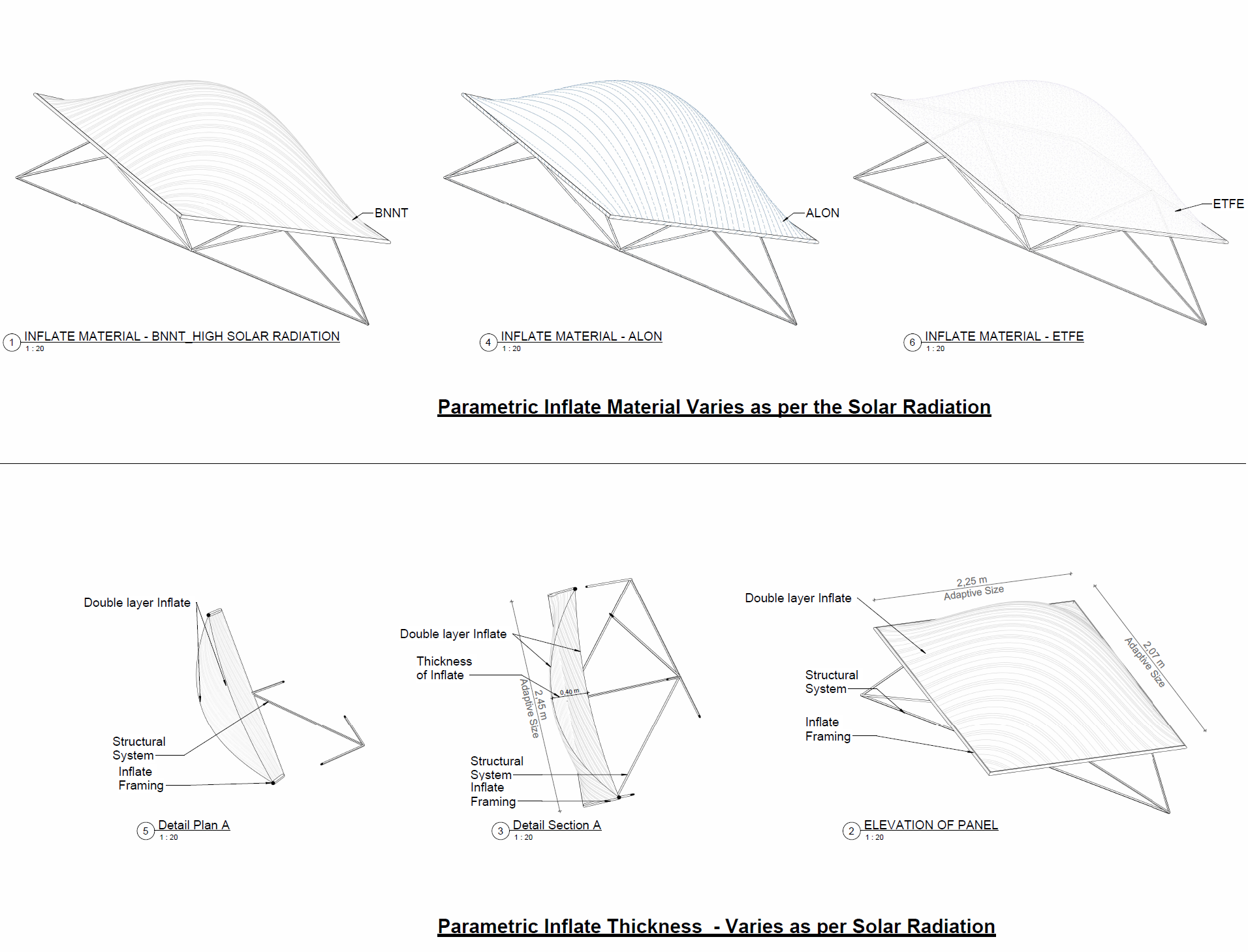
Filtering for representation of different parameters
Based on Areas: The structural framing varies in depth with the inflate framing being 10mm and the supporting structure being 8mm.The following diagrams represent the different panel areas, which were created by using filters with colors denoting a range from 2 sq m to 11 sqm.The schedule at the bottom shows the counts of panels, having same area, the subtotal as well as the total area, which can also be calculated as per material.=
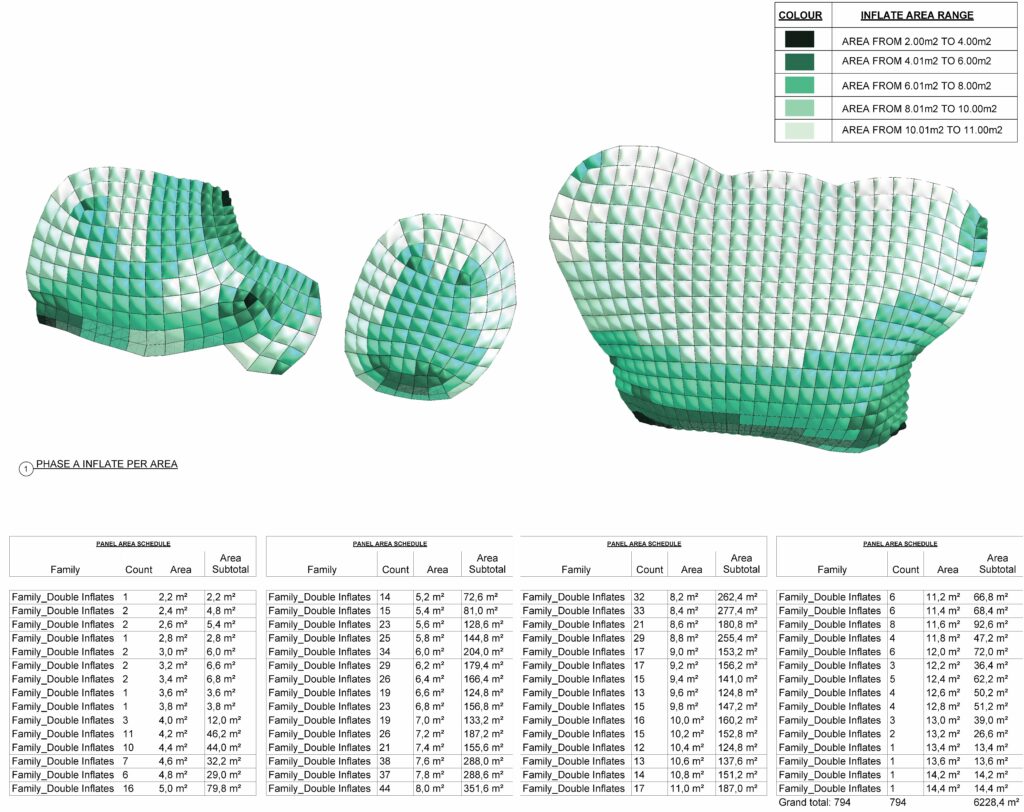
Based on Panel Material: The panels have two variables, these variables are designed as shared parameters which are dependent on the incident solar radiation. The diagram represents the incident solar radiation map which we get through kangaroo inflated mesh from Ladybug, these values domain are then remapped to element parameter of the panel material once the panels have been added as adaptive component. The panels which will receive the highest radiation materials have been mapped as BNNT followed by ALON and ETFE. In the material schedule, the color demarcation and count are shown.
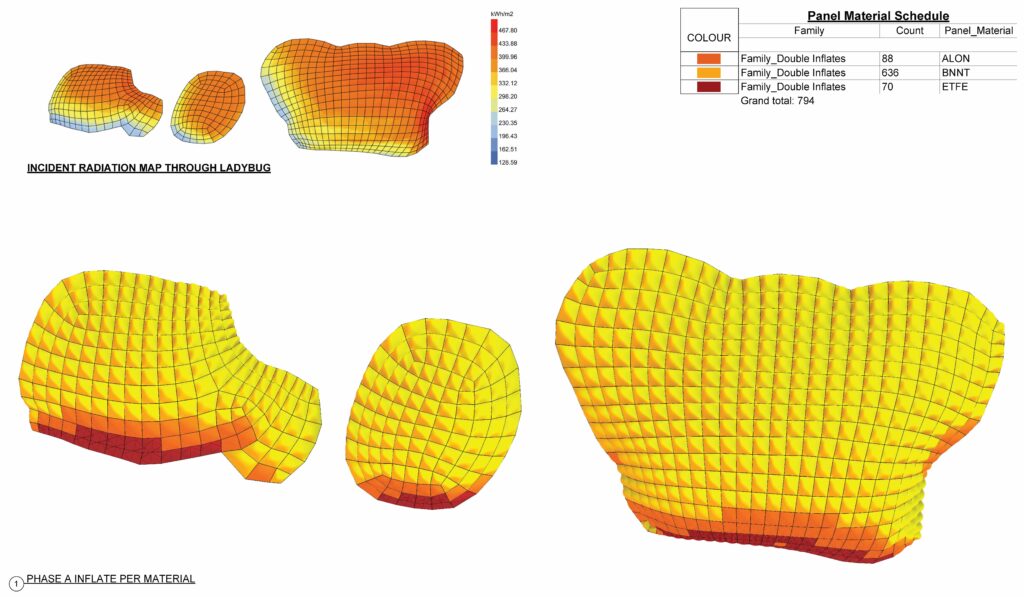
Based on Outer Inflate Thickness: These panels were divided into 3 material divisions, they are also further subdivided into panels with 3 thicknesses each. This radiation dependent shared parameter is mapped by dividing the domain of the material values to ensure constructability optimization, so that for a particular material there are only 3 thicknesses. The diagram represents, as these are double inflating, the outer inflate has a variable height from 200 to 1000 mm dependent on radiation and the inner inflate is fixed at 100mm.
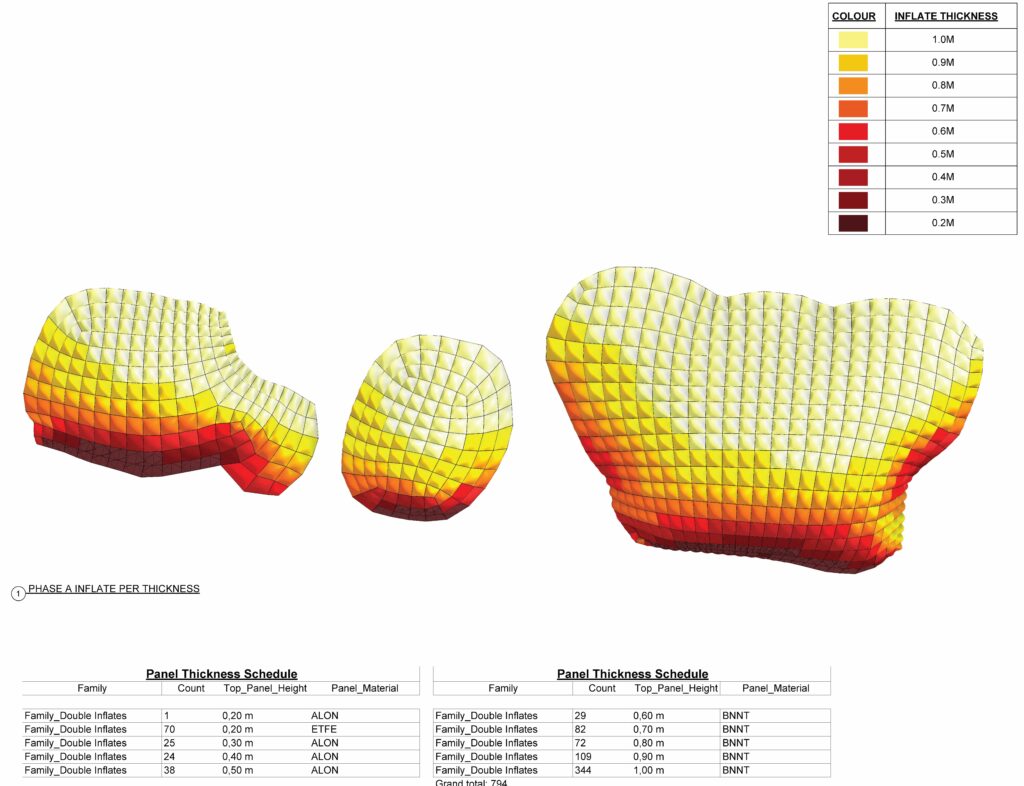
In conclusion, Subterrain Eden’s design journey epitomizes the synergy between Revit’s robust functionality and Rhino’s unparalleled creativity. From conceptualization to documentation, the dynamic duo of Revit and Rhino has facilitated groundbreaking innovation in extraterrestrial architecture. Leveraging Rhino’s computational capabilities and Revit’s precision, the team navigated challenges to craft underground caves and overground structures designed to withstand Mars’s harsh conditions. As Subterrain Eden’s design journey culminates, it underscores the transformative potential of collaboration between software platforms, with Revit providing structure and organization while Rhino infuses designs with imagination

